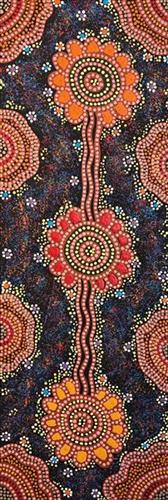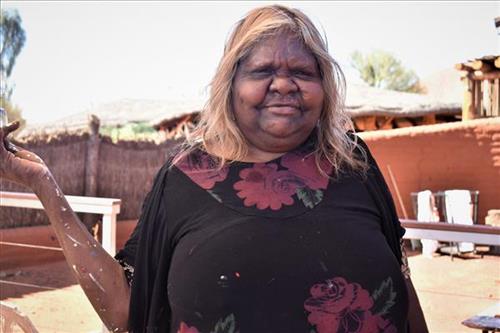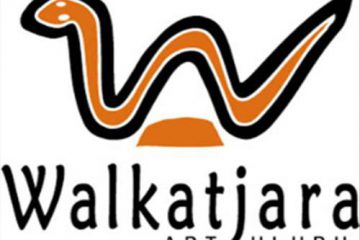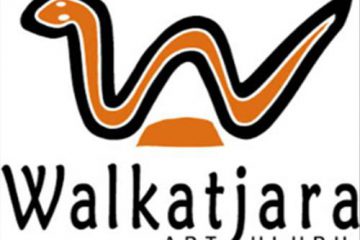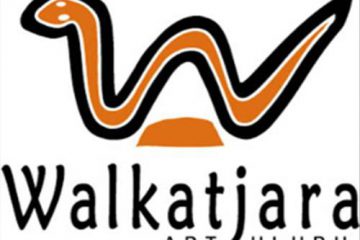377810282175902
Puli Mankurpa (Uluru, Kata Tjuta & Atila)
Nyangatja puli Ulurunya, nganampa ngura Tjukurpa pulka tjara. Kala painting tjuta palyalpai-amilapai Culture Centre-ngka, minga tjuta nganampa nguraku nintiringkula kulintjaku.’
‘This is the rock known as Uluru, our home with its powerful law. We do our paintings at the Culture Centre so tourists can learn about our country, understand and respect it.’
In this painting the artist has painted the three prominent land formations of the central desert region; Uluru (Ayers Rock), Kata Tjuta (The Olgas) and Atila (Mt Conner). They are puli mankurpa (three rocks). The artist has described the land forms, similar to a map from an aerial perspective, demonstrating their intricate knowledge of the land walked by the Ancestors.
From a very young age children learn from their grandparents and parents as they talk and tell their stories using the fine red sand of the desert as a canvas to illustrate and explain their teachings. These stories and images now inspire their art and Anangu are proud to not only make a living for themselves and their families through it but to educate in turn their own children.
Within the traditions of Tjukurpa or Creation Law are coded life survival skills. There is inma (ceremony) associated with each of the stories which are to teach and celebrate; for people to learn where they fit within both the environmental and social systems. Anangu feel strongly about continuing to teach and learn Tjukurpa, and their art is important and vital work. It sustains them economically, physically and culturally. It keeps the stories and traditions alive.
Walkatjara Art is the Aboriginal owned and governed art centre belonging to Mutitjulu community, located in the Uluru-Kata Tjuta national Park, NT.
www.facebook.com/walkatjara @ walkatjara www.walkatjara.com
